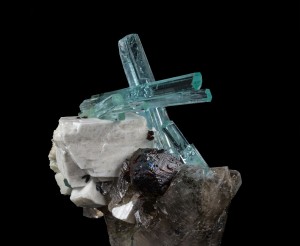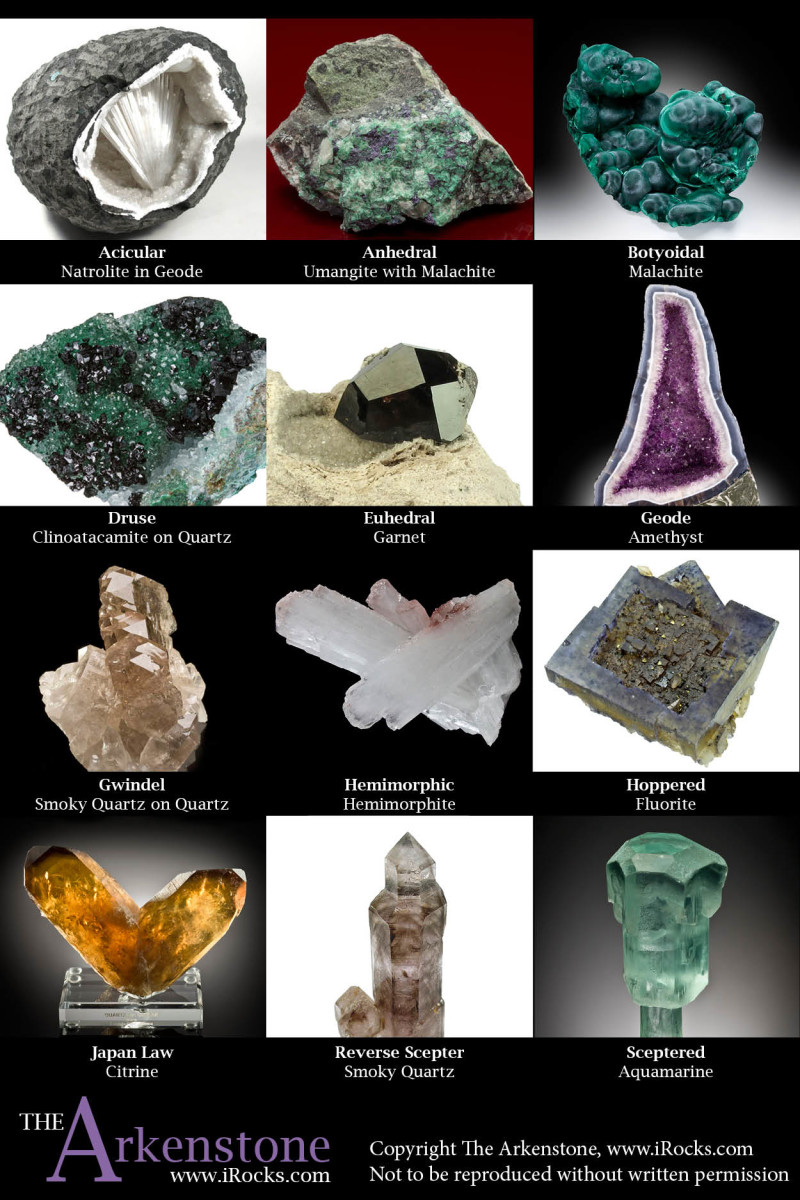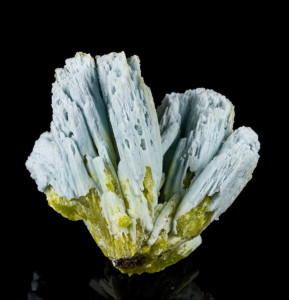A Beginner's Guide to Rock & Mineral Characteristics
Mar 14, 2016
Though the true joy for most rock and mineral collectors is the discovery of specimens they find interesting or attractive, it’s also important to understand the qualities and standards which define the value of your specimens. The creation and display of a beautiful and aesthetically pleasing collection is paramount to the hobby, and it’s important to familiarize yourself with the characteristics and qualities which differentiate the ordinary from the extraordinary.
The physical characteristics of all rock and mineral specimens are determined by their chemical composition, formation, and place of origin. For those interested in beginning or expanding their gemstone and mineral collections, the information included in this glossary will help you recognize some noteworthy rock and mineral qualities and characteristics, as well as their most common descriptive terminology.
DESCRIPTIONS OF FORM
- Acicular specimens are those with elongated or needle-shaped crystalline structure. (For example, millerite or natrolite.)
- Anhedral specimens are granular minerals, with no crystalline form.
- Botryoidal growths are rounded, lumpy formations, sometimes resembling cluster of grapes. (Hematite and malachite are frequent examples.)
- Druse describes a growth of small to tiny crystals, sometimes resembling frost or sugar-coating.
- Euhedral minerals are desirable to collectors, as they exhibit fully-developed crystal forms.
- Geodes are hollow, spherical stones. Their insides are lined with crystals which project towards their center.
- Gwindel crystals exhibit a twisted, corkscrew, or spiral pattern of growth.
- Hemimorphic crystals are double-terminated, with differently shaped ends. (Tourmaline and hemimorphite are good examples.)
- Hopper crystals have stepped cavities, caused by rapid growth at fascial intersections. (Pyromorphite and galena requently exhibit hopper growth.)
- Japan-law twins are a pair of crystals (often quartz) which form an angular, flattened “V”. They are desirable to many collectors, and generally priced accordingly.
- Reverse scepters are prismatic crystals, which show thick growth at the center or base, and slender tips.
- Scepter crystals exhibit a symmetrical cap of crystal, topping a thinner stalk or stand of crystal growth.
DESCRIPTIONS OF COMPOSITION
- Association – When two or more minerals are found within one specimen, they are said to be “in association.” Also commonly referred to as “combination specimens” or “combos,” these specimens are of interest to collectors.

- Attachment – A spot or point of damage which reflects a crystalline specimen’s point of origin, or former attachment to matrix or another crystal. A visible attachment point is less concerning to collectors than damage caused by harvesting or handling.
- Floater – A fully developed crystal or cluster of crystals, with no visible point of attachment, or connection to matrix.
- Locality – The site of a specimen’s origination. A “classic locality” refers to a well-known (usually closed) location, which formerly produced specimens of interest.
- Matrix – A bed or base of natural rock or mineral, upon which a specimen has formed. Matrix specimens offer a variety of information regarding formation, and therefore are of added interest to collectors.
- Paramorphs – Minerals which have the same composition, but different crystalline structure.
- Pseudomorph – When one mineral replaces another, while retaining the habit and form of the previous mineral, it is referred to as a pseudomorph, or pseudo. These formations are prized by collectors, due to their wide variation. Also noted as “ps. after” or “ps.” – as in “quartz ps. wulfenite”.
- Phantom – An ethereal-looking crystal-in-crystal formation, created by a slight inclusion of another mineral, or a change in color-zoning which occurred during growth.
- Subhedral – Describes a mineral which shows only traces of crystalline form.
FEATURES
- Inclusion – When one mineral is included within another – whether solid, liquid, or gaseous. Inclusions may be viewed as “flaws” within certain stones or gems, while adding value and interest to others.
- Termination – The ending point of a crystalline formation. Crystals with undefined termination are considered poor quality, while those with defined faces are desirable.
- Twins – Intergrown crystals which are fixed at unvarying angles.
- Vug – An irregular cavity, or crystal-filled pocket, in rock.
SIZE DESCRIPTIONS
- Carat (ct) – a unit of measurement which describes weight.
- Micromount (micro) – specimens which fit into a 3/4” box. These usually require magnification for best viewing.
- Macro specimens (macro) – those which fall between a micro and a thumbnail in size.
- Thumbnail specimens (tn) – those which fit into a 1.25” box.
- Toenail specimens (toenail) – those which fall between tn and mini in size.
- Miniature specimens (min or mini) – usually close to 2”.
- Small cabinet specimens (scab) – usually close to 3”.
OTHER DESCRIPTIONS
- Fluorescent – one of approximately 500 minerals which produces vibrant, high-visibility color under ultraviolet light.
- Native element – one of approximately 30 elements with a distinct mineral structure, which occur naturally in uncombined form. Gold, silver, and copper are some of the most familiar.
For more helpful information on terminology and standards relevant to the beginning collector, feel free to browse our related articles – or contact the experts at iRocks, today.

